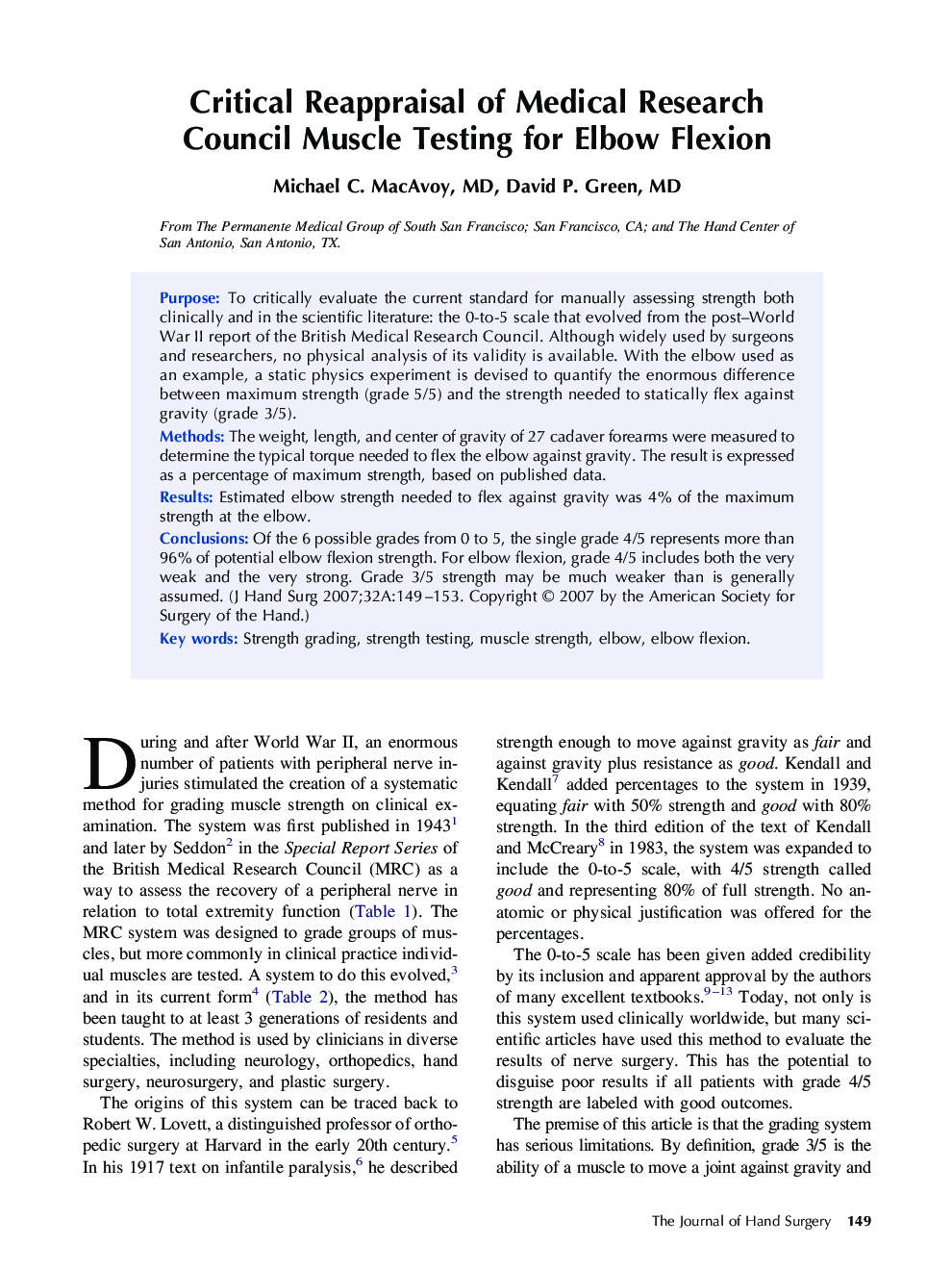| Article ID | Journal | Published Year | Pages | File Type |
|---|---|---|---|---|
| 4071547 | The Journal of Hand Surgery | 2007 | 5 Pages |
PurposeTo critically evaluate the current standard for manually assessing strength both clinically and in the scientific literature: the 0-to-5 scale that evolved from the post–World War II report of the British Medical Research Council. Although widely used by surgeons and researchers, no physical analysis of its validity is available. With the elbow used as an example, a static physics experiment is devised to quantify the enormous difference between maximum strength (grade 5/5) and the strength needed to statically flex against gravity (grade 3/5).MethodsThe weight, length, and center of gravity of 27 cadaver forearms were measured to determine the typical torque needed to flex the elbow against gravity. The result is expressed as a percentage of maximum strength, based on published data.ResultsEstimated elbow strength needed to flex against gravity was 4% of the maximum strength at the elbow.ConclusionsOf the 6 possible grades from 0 to 5, the single grade 4/5 represents more than 96% of potential elbow flexion strength. For elbow flexion, grade 4/5 includes both the very weak and the very strong. Grade 3/5 strength may be much weaker than is generally assumed.
